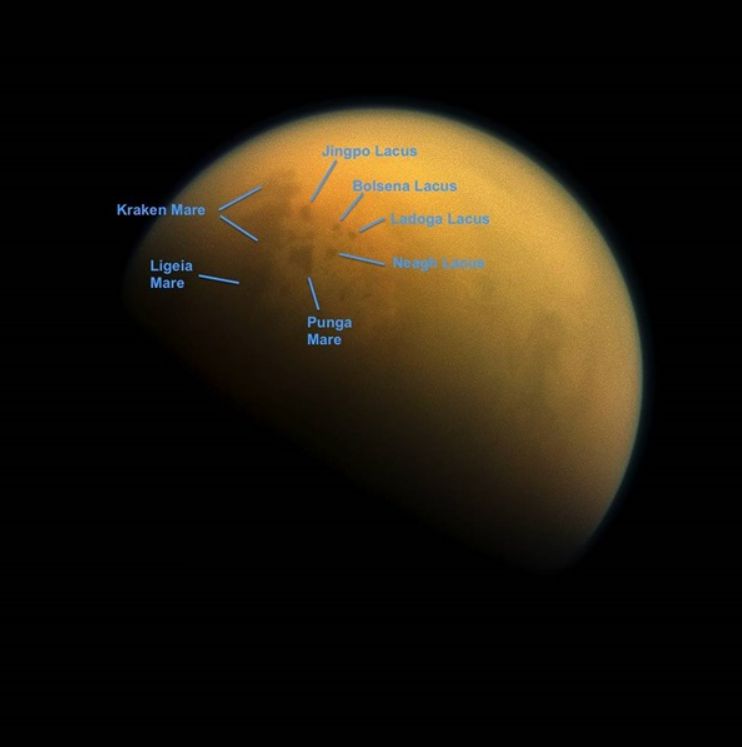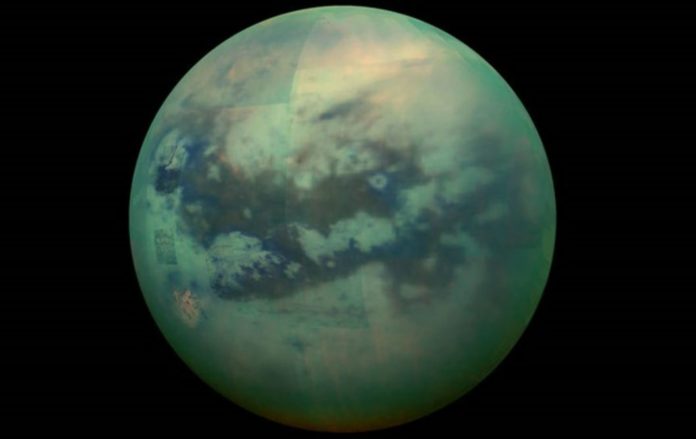The largest pool of water on the moon of Saturn has an unexpected chemical composition and is ten times deeper than previously thought.
Astronomers have found that the depth of Kraken Mare on Saturn’s largest moon Titan is more than 300 meters, which is ten times more than expected. This was reported by the University portal citing a study published in the Journal of Geophysical Research: Planets.
It is noted that the corresponding data back in 2014 was collected by the interplanetary probe Cassini. The depth of Kraken Sea was previously estimated at 35 meters. However, subsequent calculations showed that it is almost equal to the height of the Chrysler Building in New York (319 meters).
- Does This Mean We Stopped Being Animal and Started Being Human Due to ‘Copy Paste’ Errors?
- The One Lifestyle Choice That Could Reduce Your Heart Disease Risk By More Than 22%
- Aging: This Is What Happens Inside Your Body Right After Exercise
- Immune-Boosting Drink that Mimics Fasting to Reduce Fat – Scientists ‘Were Surprised’ By New Findings
- Gun Violence in America: What They Don’t Talk About at the Debate
As the study’s lead author Valerio Poggiali, a researcher at the Cornell Center for Astrophysics and Planetary Sciences (CCAPS), pointed out, the depth and composition of each of Titan’s seas had been studied and only Kraken Mare, which contains about 80% of the satellite’s surface fluids, remained a mystery.
Scientists have determined the depth of the sea by analyzing the time the probe’s radar signal is reflected from its surface and bottom, and the composition by the amount of energy absorbed when passing through the liquid.
Both the composition and depth of the Kraken’s sea surprised specialists. As it turned out, the composition of the liquid – mainly a mixture of ethane and methane – was dominated by methane, as in the neighboring Ligeia Mare.
Astronomers have previously assumed that Kraken is richer in ethane due to its size and geographic location at low latitudes. The unexpected chemistry of the sea will help to better understand the rainfall cycle on Titan.
Scientists also hope to find out where liquid methane comes from on Saturn’s moon. Titan receives about 100 times less energy from the Sun than Earth, and constantly converts methane in its atmosphere into ethane.


It was estimated that surface methane reserves should have been completely depleted in ten million years.
In the future, scientists are planning to develop and send a submarine to Titan, which will explore Kraken Mare.
Recall, despite the low temperature, conditions on Titan can be compared with the Earth in the early stages of development.
- Does This Mean We Stopped Being Animal and Started Being Human Due to ‘Copy Paste’ Errors?
- The One Lifestyle Choice That Could Reduce Your Heart Disease Risk By More Than 22%
- Aging: This Is What Happens Inside Your Body Right After Exercise
- Immune-Boosting Drink that Mimics Fasting to Reduce Fat – Scientists ‘Were Surprised’ By New Findings
- Gun Violence in America: What They Don’t Talk About at the Debate
Therefore, scientists do not exclude the possibility of the existence of the simplest forms of life in the bowels of the satellite, where the environment may be more comfortable than on the surface.
